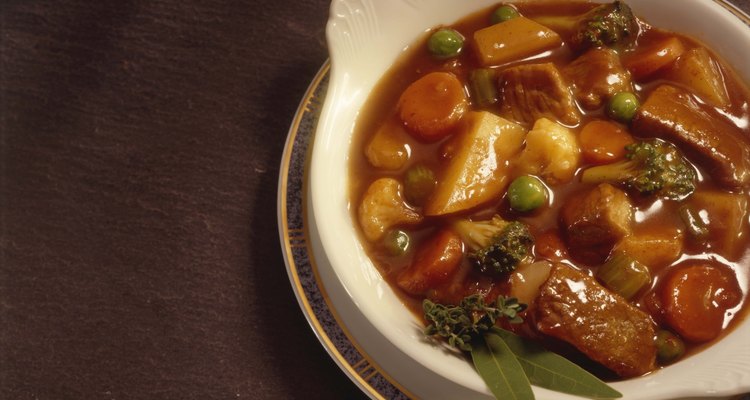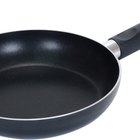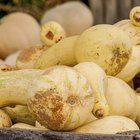
The neck is an often forgotten cut of meat because it tends to be muscular, sinewy and tough. However, slow cooking dissolves the collagen, leaving a surprising amount of tender meat with an outstanding flavor. Taken from beef or venison, or from a smaller animal such as lamb, the neck is a rich and flavorful budget-stretcher. Serve neck meat in bowls with warm bread on the side, or incorporate the meat into soups or stews.
Step 1
Rub the neck with cooking oil, then sprinkle it generously with salt and pepper.
Step 2
Coat a roasting pan lightly with cooking oil. Place the neck in the pan.
Step 3
Preheat the oven to 375 degrees Fahrenheit. Place the pan in the oven and roast the neck, uncovered, for about 2 hours. Turn the neck occasionally so the meat browns evenly on all sides.
Step 4
Remove the pan from the oven and add about 1 inch of liquid such as broth, cider or beer. Cover the pan securely. Return the neck to the oven and lower the temperature to 325 F.
Step 5
Add vegetables such as sauteed onions, leeks, garlic, or carrots, if desired. You can also add fry bacon and add it to the roasting pan.
Step 6
Cook the neck until the meat begins to fall off the bone, approximately 4 to 6 hours, depending on the size of the neck. Check the neck at least every 2 to 3 hours throughout the cooking time and add more liquid to replace evaporated liquid. Don't allow the level of liquid to drop below 1/2 inch.
Step 7
Transfer the neck to a plate. Let the meat cool for about 5 minutes, then use a fork to pull chunks of meat from the neck bone.
Step 8
Season the meat to taste before serving.
Related Articles

How to Cook the Neck of a Deer

How to Cook Neck Bones & Pig Feet
How to Cook Pork Neckbones in a Slow ...

How to Cook a Deer Neck Roast in a Slow ...
How to Smoke Venison Neck Roast

How to Cook Beef Top Round Pot Roast

Can the Neck Be Exfoliated?

How to Cook the Neck of Lamb

How to Cook a Four-Pound Sirloin Tip ...

How to Fix a Turkey Neck for Dinner

How Do You Tuck the Wings to Roast a ...

How to Cook Deer Steaks in the Oven on ...

How to Cook Tender Rolled Flank Steaks ...

How to Cook a Neck Pumpkin

How to Marinate BBQ Chicken Thighs & ...

How to Cook a Whole Beef Shank Roast

How to Cook Texas Broil Roast

How to Cook an 8- to 10-Pound Beef ...
How to Slow Cook a Pot Roast With Beef ...

How to Fix Too Much Italian Seasoning ...
References
Tips
- You can also cook neck bone in a Dutch oven on the stove top. Brown the meat in hot oil, then add liquid. Bring the liquid to a boil, then reduce the heat to to a gentle simmer. Simmer the meat for 5 to 7 hours, or until the meat falls off the bone.
Writer Bio
M.H. Dyer began her writing career as a staff writer at a community newspaper and is now a full-time commercial writer. She writes about a variety of topics, with a focus on sustainable, pesticide- and herbicide-free gardening. She is an Oregon State University Master Gardener and Master Naturalist and holds a Master of Fine Arts in creative nonfiction writing.
Photo Credits
Jupiterimages/Stockbyte/Getty Images